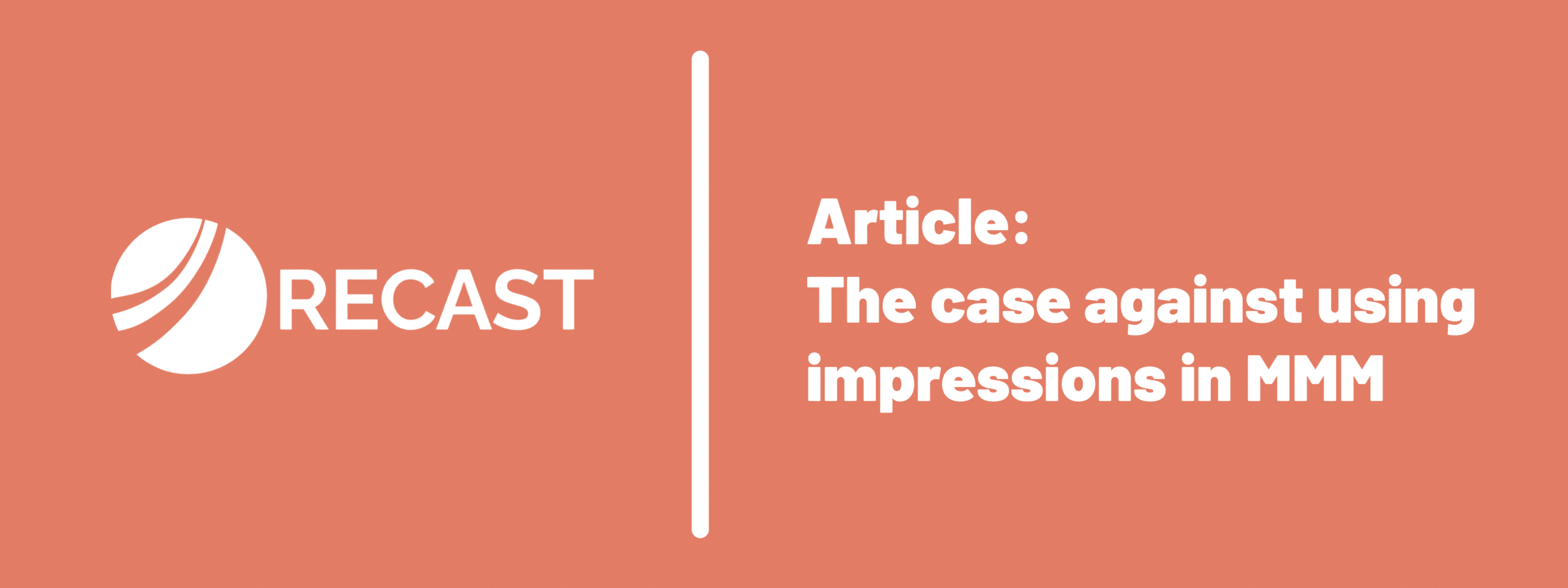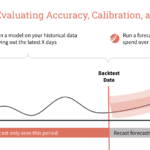At Recast we generally recommend using spend — not impressions — to represent channel activity in a marketing mix model. This isn’t a technical limitation of the model itself, but rather reflects our beliefs about the critical limitations of “impressions” metrics that modelers should be aware of.
This recommendation is sometimes surprising for those that have worked with legacy MMM vendors, but we believe that when you think deeply about what you’re trying to measure with an MMM and the flaws of impression measures, the answer is obvious.
At Recast, we believe:
- The goal of MMM is to drive bottom-line improvement in a business (i.e. make the brand more money).
- Bottom-line improvement requires that we measure how marketing spend (dollars in) maps to the core KPIs of the business (dollars out).
- Intermediate measures like “impressions” only muddy the water since every business would rather have fewer impressions that lead to more revenue than more impressions that lead to less revenue.
- Models using impressions are less interpretable, because you have to convert spend to impressions first, then impressions to sales. If you’re not careful you can get this seriously wrong by failing to account for saturation (cost per impression rises at higher spend levels!).
This way of working can be surprising to marketers coming to Recast who are used to working with MMM vendors that put a lot of focus on things like GRPs. Unfortunately, many vendors like to focus on measuring impressions because:
- They’re relatively “easy” to measure and tend to be easier to work with when building a model by hand.
- Impressions scale linearly with dollar investment into a marketing channel so vendors are extremely incentivized to sell impressions even if it doesn’t drive any real impact.
- Big ad buys sometimes come with ‘free’ impressions or GRPs, thrown in to sweeten the deal or make up for past under-delivery.
Beyond that…
We think impressions are bad metrics to include in an MMM for a few other reasons:
- What actually matters for marketing effectiveness is the total number of impressions and the impression quality. Impressions alone are misleading because they do not account for quality.
- Impressions aren’t measured apples-to-apples across platforms. An impression from Meta is not the same as an impression from Youtube, which is not the same as a TV impression and is definitely not the same as an estimated impression from a billboard campaign.
- Platforms often change how they measure impressions over time. So (even within Meta) an impression today might not be the same thing as an impression 3 weeks ago.
- There’s no such thing as ‘free’ impressions: this is just an accounting loophole to get away with charging a higher CPM on their rate card, ignoring the true CPM.
All of these reasons make impressions a bad metric to use for running a business and for marketing mix modeling. At Recast, we recommend that brands focus on identifying which marketing channels are actually driving bottom-line improvements in the business, not just driving vanity metrics like “impressions”.



